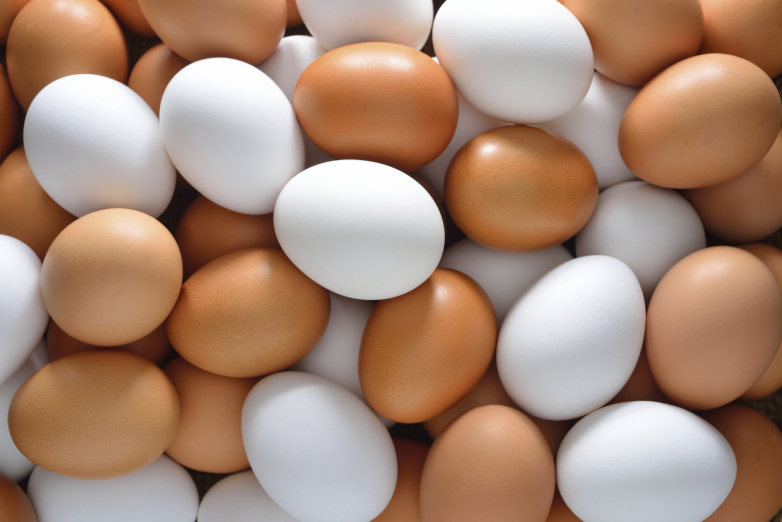See below for all things egg, including surprising eggs, scientific eggs, magical eggs, alien eggs, and jeweled eggs. Try the incredible egg drop experiment, make egg geodes, and find out the real answer to the troubling question of which came first: the chicken or the egg?
Also see Birds and The Amazing Chicken.
Table of Contents
ALL ABOUT EGGS
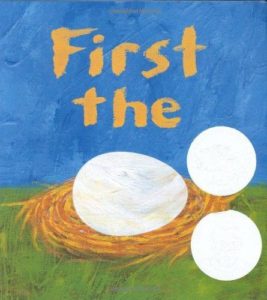 |
Laura Vaccarro Seeger’s First the Egg (Roaring Brook Press, 2007), a Caldecott Honor Book, is a cleverly designed explanation of what comes first: First the egg, then the chicken; First the tadpole, then the frog; First the caterpillar, then the butterfly; First the paint, then the picture…and all ties up neatly at the end. For ages 2-5. |
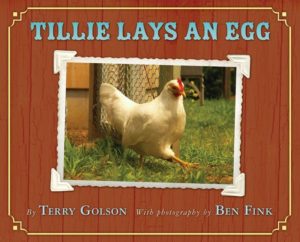 |
Tillie, of Terry Golson’s Tillie Lays an Egg (Scholastic, 2009) lives with six other hens in the henhouse in the backyard of Little Pond Farm. The other hens cooperatively lay their eggs in nesting boxes, but Tillie prefers the garden, the porch, the kitchen, the laundry basket, and the pickup truck. Color photographs follow the unpredictable Tillie around the farm. Think hide-and-seek, with a chicken and some eggs. For ages 3-7. |
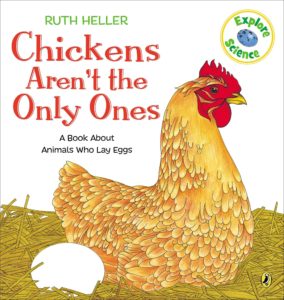 |
Ruth Heller’s gorgeous picture book Chickens Aren’t the Only Ones (Puffin, 1999) is an irresistible rhyming account of egg-laying animals and their eggs – among them seahorses, snakes, spiders, and octopuses. You’ll never forget the meaning of “oviparous.” For ages 4-8. |
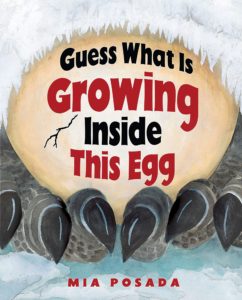 |
Mia Posada’s Guess What’s Growing Inside This Egg (Millbrook Press, 2006) is a fun interactive read. For each of the featured eggs, there’s a riddle-like verse providing clues; then readers turn the page to find out what’s inside the egg, along with a short informational paragraph about the animal. Attractive collage illustrations. For ages 4-8. |
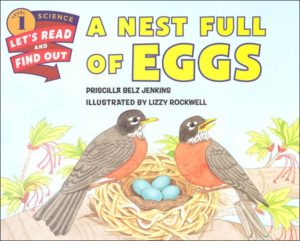 |
By Priscilla Belz Collins, A Nest Full of Eggs (HarperCollins, 1995) in the Let’s-Read-and-Find-Out Science series follows a robin family through the year, beginning with nest building, then the eggs are laid and hatched, baby birds are cared for, and learn to fly. Nicely presented information in story form for ages 4-8. |
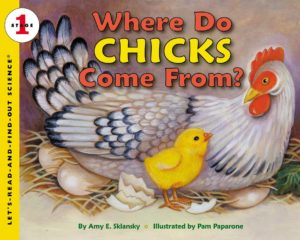 |
Also in the Let’s-Read-and-Find-Out Science series, see Amy E. Sklansky’s Where Do Chicks Come From? (HarperCollins, 2005). |
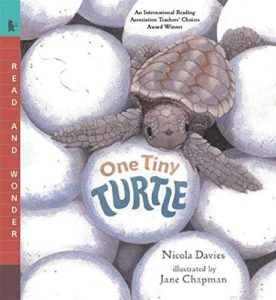 |
By Nicola Davies, One Tiny Turtle (Candlewick, 2005) is the gentle story of a loggerhead turtle who lives in the ocean – until one summer night she arrives on the very beach where she was born to lay her own eggs. Notes provide additional information. For ages 4-8. |
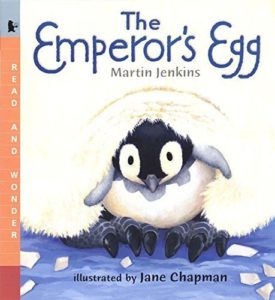 |
Martin Jenkins’s The Emperor’s Egg (Candlewick, 2002) is the story of how the male emperor penguin – largest of all penguins – spends two months without food, standing with an egg on his feet. For ages 4-9. |
| From The Teacher’s Guide, The Emperor’s Egg Printouts are a collection of word games and puzzles to accompany the book. | |
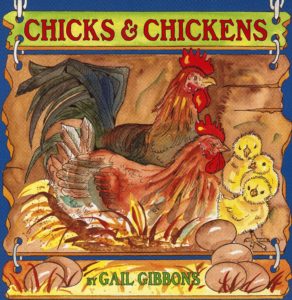 |
Gail Gibbons’s Chicks and Chickens (Holiday House, 2005) is an attractively illustrated picture-book introduction to chicken biology and behavior, variously covering egg-laying, embryo development and hatching, the characteristics of chicks, hens, and roosters, and a survey of chicken breeds. For ages 5-8. |
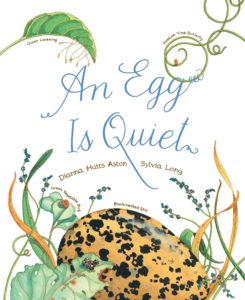 |
By Dianna Hutts Aston, An Egg is Quiet (Chronicle Books, 2014) is an exquisitely illustrated introduction to the vast variety of eggs, discussing shapes, sizes, patterns, functions, and the many places in which eggs are found. A wonderful introduction for ages 5-8. |
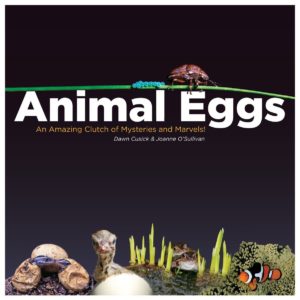 |
By Dawn Cusick and Joanne O’Sullivan, Animal Eggs (Early Light, 2012) is a 48-page account of eggs, illustrated with creative color photographs. Covered is an amazing array of eggs, from those of skinks and spiders to frogs, turtles, birds, and more. Readers learn about egg shapes, sizes, and colors; the many ways in which animals protect their eggs; which animals steal eggs; and more. For ages 5-9. |
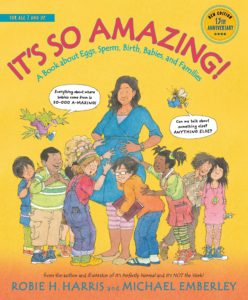 |
People have eggs too. Robie H. Haris’s 88-page It’s So Amazing! (Candlewick, 2004) – subtitled “A Book about Eggs, Sperm, Birth, Babies, and Families” – is a gentle, cheerful, and straightforward explanation of sex, birth, puberty, and different kinds of families (helped along with some banter between a talkative bird and bee). Very well done for ages 7-10. |
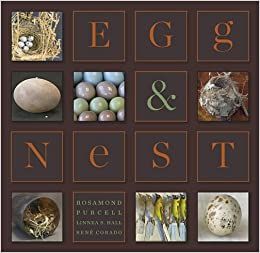 |
By photographer Rosamond Purcell, Egg & Nest (Belknap Press, 2008) is a gorgeous collection of color photographs of eggs and nests, accompanied by a helpful text on the history of egg collecting and the biology of birds. For teenagers and adults, but all ages will love the pictures. |
| From the Food Timeline, Eggs has a lot of information about the history of eggs, egg symbolism, egg sizes and preservation, and egg cookery, with quotations and resources. | |
| From The Incredible Egg, see Eggs in the Classroom for virtual egg farm tours and egg-based projects and activities for all ages. | |
| What’s the world’s most expensive egg? Who invented the egg carton? Learn fascinating facts at Egg Facts A to Z. |
LESSON PLANS
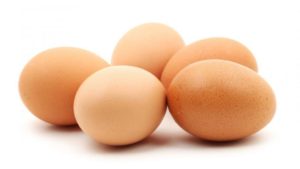 |
From First School, Eggs Theme is a multifaceted preschool lesson plan with printable worksheets (E is for Egg, N is for Nest) and coloring pages, online puzzles and games, and activity suggestions. |
| Egg-Laying Animals is a lesson plan for grades 2-6 in which kids make papier-maché eggs and build appropriate habitats for them. | |
| From Egg to Chick is a lesson plan to accompany a chick-hatching project, with a long list of associated experiments and arts and crafts. For elementary-level students. (See EGG SCIENCE, below.) | |
| The Incredible Egg is a downloadable 4-H curriculum guide targeted at grades 4-5. It covers the parts of an egg, chick embryology, and egg nutrition and the food pyramid. Many illustrated worksheets. | |
| Education World’s multidisciplinary Five Lesson Plans for Easter: Just Add Eggs are really appropriate for any time of the year. For example, kids make and read maps leading to hidden eggs; make egg-based paints; experiment with eggs in saltwater; do math exercises with jelly eggs; and do art projects with egg cartons. Each lesson plan has extension activities. (There’s a lot here.) Appropriate for a wide range of ages. | |
| From the Utah Education Network, Eggs Introduction is a six-day unit on eggs. Included are background info for parents and teachers, recipes, and printable worksheets. (Also see EATING EGGS, below.) |
